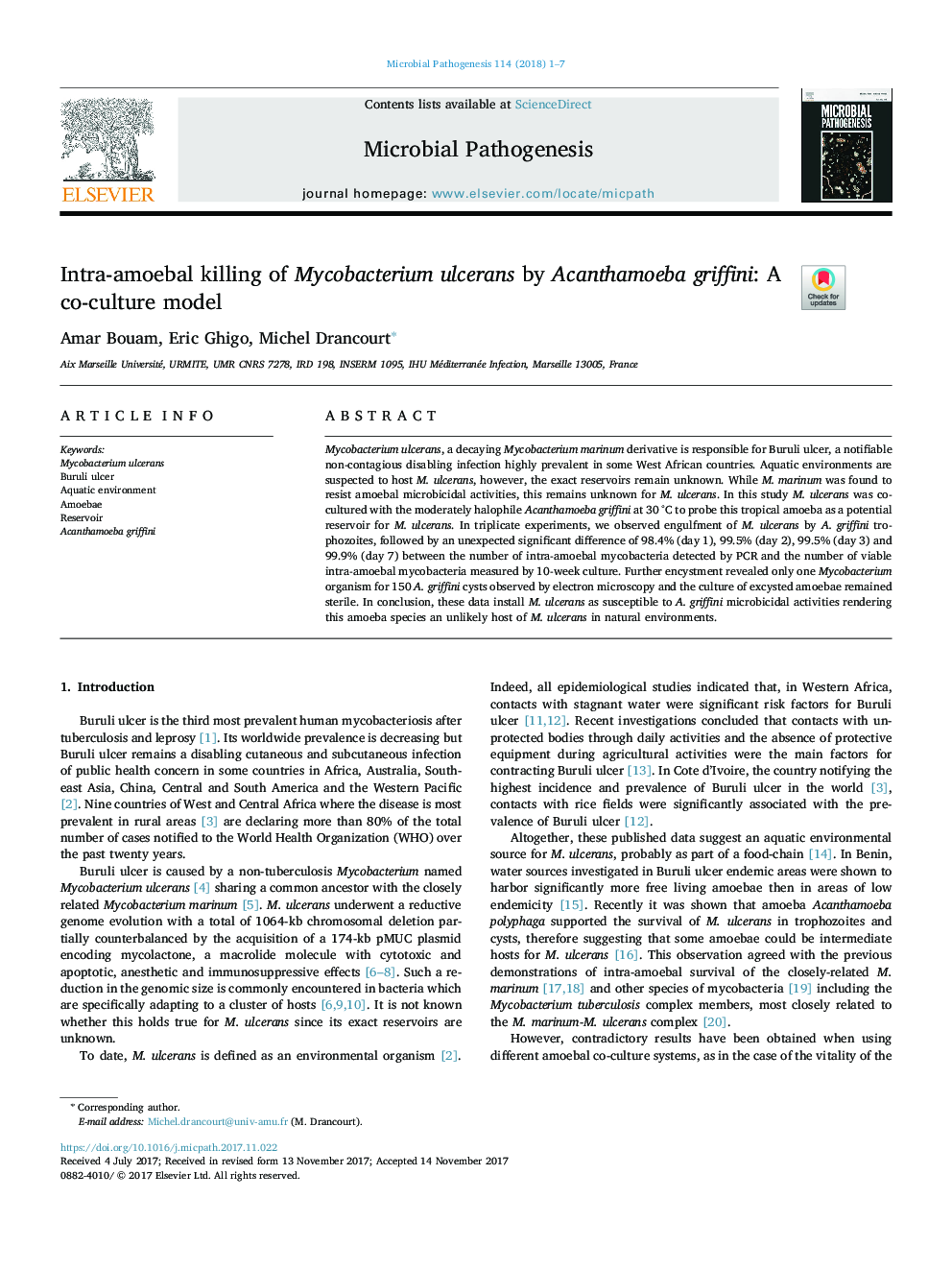| Article ID | Journal | Published Year | Pages | File Type |
|---|---|---|---|---|
| 8749835 | Microbial Pathogenesis | 2018 | 7 Pages |
Abstract
Mycobacterium ulcerans, a decaying Mycobacterium marinum derivative is responsible for Buruli ulcer, a notifiable non-contagious disabling infection highly prevalent in some West African countries. Aquatic environments are suspected to host M. ulcerans, however, the exact reservoirs remain unknown. While M. marinum was found to resist amoebal microbicidal activities, this remains unknown for M. ulcerans. In this study M. ulcerans was co-cultured with the moderately halophile Acanthamoeba griffini at 30 °C to probe this tropical amoeba as a potential reservoir for M. ulcerans. In triplicate experiments, we observed engulfment of M. ulcerans by A. griffini trophozoites, followed by an unexpected significant difference of 98.4% (day 1), 99.5% (day 2), 99.5% (day 3) and 99.9% (day 7) between the number of intra-amoebal mycobacteria detected by PCR and the number of viable intra-amoebal mycobacteria measured by 10-week culture. Further encystment revealed only one Mycobacterium organism for 150 A. griffini cysts observed by electron microscopy and the culture of excysted amoebae remained sterile. In conclusion, these data install M. ulcerans as susceptible to A. griffini microbicidal activities rendering this amoeba species an unlikely host of M. ulcerans in natural environments.
Related Topics
Life Sciences
Immunology and Microbiology
Microbiology
Authors
Amar Bouam, Eric Ghigo, Michel Drancourt,
